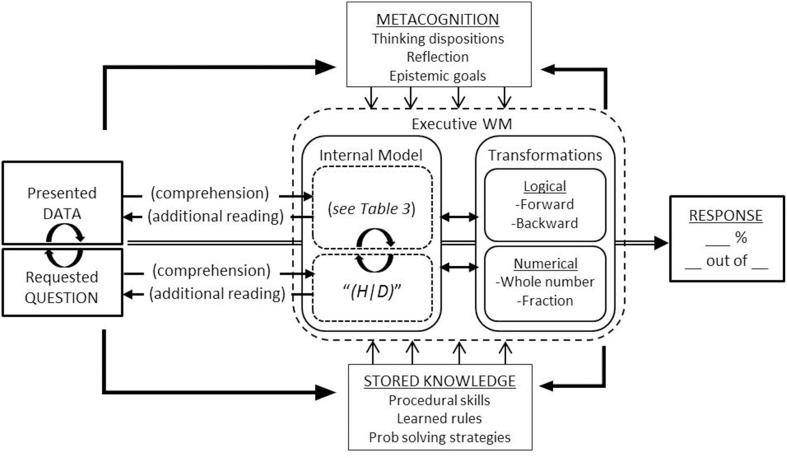Figure 3.
Framework for understanding Bayesian word problem solving. The task (left) is conceived as the presented data and the requested question. A text comprehension process gives rise to an initial internal model of the data (including inferences not directly in the text; see Table 3). The comprehension of the question “(H|D)” initiates a goal-oriented search (though internal representation and problem text) for the requested relations, along with logical and numerical computations aimed at deriving information not directly available in the text. The processing of the task also activates metacognitive dispositions as well as potentially relevant stored knowledge and skills, both of which can influence both what information is processed and how that information is processed. A continuously updated working memory also provides reciprocal feedback to metacognition and calls for additional stored knowledge if needed. The final response given will depend on a complex interaction of the task formulation, metacognition, available knowledge and skills, and the efficiency of an executive working memory. For example, metacognition can influence the effort invested into the task, while stored knowledge can influence the relative effort required for a given individual.

